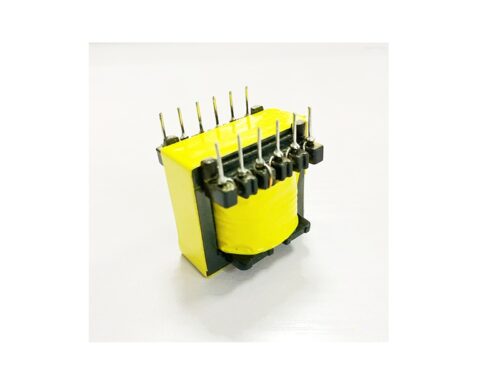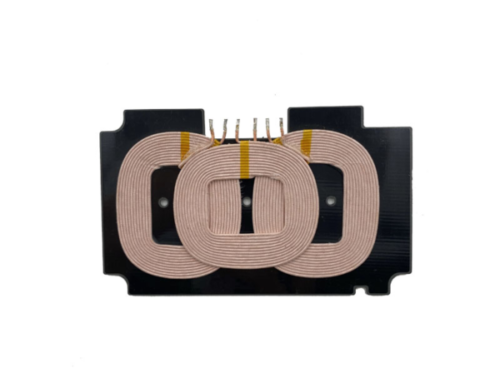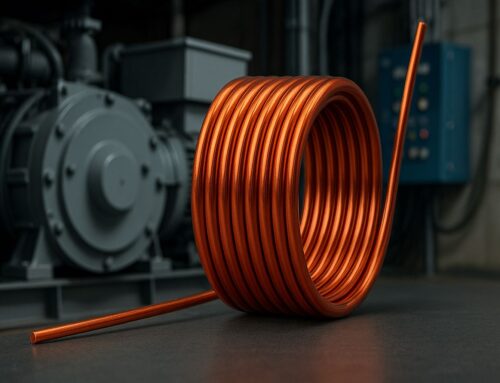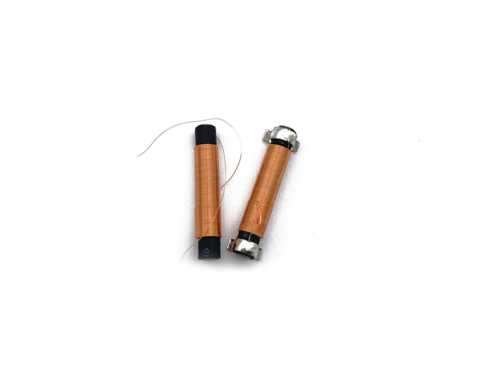In the world of electrical engineering, precision is key. One crucial component used to fine-tune circuits is the variable inductor coil. Unlike fixed inductors, variable inductor coils allow for adjustments in inductance, making them incredibly versatile for various applications. These coils play a critical role in tuning circuits, managing frequencies, and ensuring optimal performance across a range of electronic devices.
A variable inductor coil is an inductor whose inductance can be adjusted. Inductance refers to a coil’s ability to resist changes in current, and it directly affects how an electronic circuit responds to different frequencies. The main advantage of variable inductors is their ability to modify this inductance, making them useful for a wide variety of applications.
Typically, a variable inductor coil consists of a coil of wire wound around a core, which can be made from magnetic materials like iron or ferrite. By adjusting the position of a core or changing the coil’s geometry, the inductance of the coil can be varied.
How Do Variable Inductor Coil Work?
Variable inductor coils work on the principle of electromagnetic induction. When current flows through a coil, it generates a magnetic field around the coil. The strength of this magnetic field is directly related to the inductance, which, in turn, affects the circuit’s ability to store energy in the form of a magnetic field.
In variable inductors, the inductance can be adjusted by altering certain factors:
-
Core Position: In some designs, the core’s position within the coil can be adjusted. Moving the core closer to or further from the coil changes the magnetic field strength and, therefore, the inductance.
-
Coil Turns: The number of turns in the coil can be varied, affecting the coil’s inductance. Fewer turns result in lower inductance, while more turns increase it.
-
Core Material: The type of core material also impacts inductance. Magnetic materials like ferrite offer higher inductance than non-magnetic materials.
By adjusting any of these factors, variable inductor coils enable engineers to fine-tune circuits for specific applications.
The Importance of Variable Inductor Coil in Circuit Design
Variable inductor coils are critical in electronic circuit design because they offer flexibility in controlling the behavior of the circuit. Their ability to change inductance provides a way to manage frequencies, filter signals, and ensure the circuit performs optimally.
1. Tuning Radio Frequencies
One of the most common uses for variable inductor coil is in tuning radio frequencies (RF). In radio transmitters and receivers, circuits need to operate at specific frequencies. A variable inductor coil allows engineers to adjust the circuit’s resonance frequency, ensuring that it matches the desired frequency for receiving or transmitting signals.
For example, in AM and FM radio, the variable inductor coil help tune the receiver to the correct station. The inductance adjustment allows the radio to lock onto a specific frequency and filter out unwanted noise.
2. Controlling Impedance in Circuits
Impedance matching is crucial for efficient power transfer in many electronic systems, including power amplifiers and communication devices. By adjusting the inductance in a circuit using a variable inductor, engineers can match the impedance of different components to ensure maximum energy transfer and minimal signal loss.
This feature is especially important in high-frequency circuits, where impedance mismatches can cause reflections and reduce overall performance. Variable inductors help to maintain the system’s efficiency by optimizing impedance matching.
3. Power Supply Regulation
In power supply systems, especially those used in high-precision applications, the ability to regulate power efficiently is essential. Variable inductor coil are used in buck and boost converters to control the voltage and current supplied to the load. Adjusting the inductance allows for smoother operation and prevents power surges or fluctuations that could damage sensitive components.
In power electronics, variable inductors provide the flexibility needed to regulate current in real-time, ensuring that the system operates within safe and optimal parameters.
4. Signal Filtering and Noise Reduction
Electronic circuits often encounter unwanted signals or noise that can interfere with performance. Variable inductor coil are used in filters to isolate specific frequencies while blocking others. By adjusting the inductance, the filter’s cutoff frequency can be modified, allowing it to pass or block specific signals.
This capability is crucial in communication systems, where signal clarity is critical. Variable inductors allow engineers to fine-tune the filter to only pass the desired frequencies, improving overall signal quality.
Applications of Variable Inductor Coil
1. Radio Frequency (RF) Circuits
Variable inductors are extensively used in RF circuits to control frequencies. These circuits include everything from AM/FM radios to satellite communication systems. By adjusting the inductance of the coil, engineers can ensure that the system operates on the correct frequency range, ensuring efficient transmission and reception.
2. Communication Systems
In communication systems, such as cell phones and Wi-Fi routers, variable inductors are used to optimize signal strength and clarity. These systems rely on precise frequency control to ensure the proper transmission and reception of signals, and variable inductor coil provide the flexibility required to adjust performance as needed.
3. Power Electronics
Power electronics also use variable inductors to regulate power flow. Systems like converters, inverters, and voltage regulators rely on these inductors. By adjusting the inductance, engineers can control the power output and ensure that the system operates efficiently.
4. Audio Systems
In audio systems, variable inductors help control bass response and overall sound quality. Adjusting the inductance of the coils in the crossover networks allows for fine-tuning of the frequency response, ensuring that audio systems deliver clear and accurate sound across a wide range of frequencies.
Benefits of Using Variable Inductor Coil
1. Flexibility in Design
The primary benefit of variable inductor coil is their flexibility. Designers can fine-tune circuits to meet specific needs, whether that’s adjusting for frequency, impedance, or signal clarity. Industries that require precision rely on this flexibility.
2. Improved Circuit Performance
By allowing adjustments to the inductance, variable inductor coil enable engineers to optimize circuit performance. Whether it’s reducing signal distortion, improving impedance matching, or controlling power flow, these coils help improve the overall efficiency of the system.
3. Cost-Effective Solution
Instead of using multiple fixed inductors for different applications, variable inductors provide a single, adjustable solution. This reduces the need for additional components and simplifies the design process, leading to cost savings in manufacturing.
4. Enhanced Frequency Control
For systems that rely on specific frequencies, variable inductor coil offer an efficient way to adjust and control frequency response. This capability is particularly valuable in communication and RF systems, where the correct frequency is critical for successful operation.
Conclusion
Variable inductor coil are an essential component in modern electronic systems. They provide the flexibility needed to adjust inductance, optimize circuit performance, and ensure that systems function efficiently across a range of applications. From RF tuning to power regulation and signal filtering, variable inductors offer unmatched precision and adaptability.





Leave A Comment